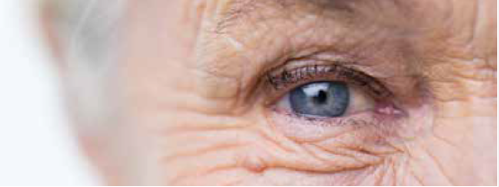Cataract, Refractive
LASIK for Ageing Eyes
PresbyLASIK remains a competitive option for presbyopes

Roibeard O’hEineachain
Published: Monday, July 3, 2023

PresbyLASIK can provide patients with a depth of field equivalent to that provided by multifocal and extended depth of focus IOLs and is stable over time, said Professor Jorge L Alió.
“For us as clinicians, presbyLASIK is a very simple technique,” he explained. “It is minimally invasive and does not mutilate the crystalline lens. In addition, it can rejuvenate the patient’s eye by compensating for the increasing positive spherical aberration of the lens that occurs with age. Moreover, LASIK is a well-developed surgery loved by patients, and more than 25 million patients have undergone the procedure.”
He noted the term covers a range of LASIK techniques that aim to increase the depth of field in the presbyopic patient’s eyes by creating multifocality in both eyes using central, peripheral, or transitional profiles. Central presbyLASIK creates a central hyperpositive area for near focus and a peripheral area for distance. In peripheral presbyLASIK, the centre area provides the distant focus while the peripheral ablation provides the near focus.
Currently available platforms
PresbyMAX (Schwind) is a form of central presbyLASIK platform developed by Prof Alió and his associates and later by Schwind. It creates a hyperpositive central area in the cornea that can achieve -0.75 D to -2.50 D in near vision correction and a peripheral area calculated to correct the distance error. Another central presbyLASIK technique is Supracor (Technolas Perfect Vision), an aberration-optimised presbyopic algorithm only developed for hyperopes.
Peripheral presbyLASIK techniques include the AMO VISX approach for hyperopic presbyopes, which treats up to +4.0 D of hyper opia and -2.0 D of astigmatism. The Presbyond Laser blended vision performed with the Carl Zeiss Meditec laser induces a small degree of monovision and negative spherical aberration to increase the depth of field. It can be performed on emmetropic, myopic, and hyperopic presbyopes.
Central presbyLASIK has the advantage of requiring minimal central ablation to increase the near defocus up to -3.8 D and covers the whole distance range due to different foci for distance, intermediate, and near. It is also typically bilateral, which maintains stereopsis. It has the disadvantage of being pupil size dependent, can reduce contrast sensitivity, and requires neuroadaptation to multifocal optics.
Peripheral presbyLASIK has the advantage of requiring minimal ablation at the corneal centre. It can provide good near vision. However, the near focus requires ablation of a greater amount of tissue. The defocus provided is therefore limited to less than 3.0 D because of the amount of spherical aberration it would otherwise induce.
The PresbyMAX experience
Prof Alió noted PresbyMAX underwent several iterations since he first introduced it in 2012. In its latest “hybrid” form, it aims for a refraction of plano in the dominant eye with a-1.13 D add and a refraction of -0.88 D in the non-dominant eye with a -2.13 D add. The ablation profiles were optimised by using a predictive model based on a light propagation algorithm designed to give 35% to 40% to near focus, 15% to intermediate, and 45% to 50% to distance.
“This is a bi-aspherical approach for a multifocal profile in which you have a central asphericity with an increased steepness in the central 3.0 mm of the cornea, which is nonlinear and provides an intermediate aspheric profile as well,” he explained. “To get the three dioptres of defocus achieved with an IOL, we only need to get a two-dioptre add-on to the corneal plane. Therefore, we can reproduce most of what can be achieved with a multifocal lens if the patient is properly selected.”
For PresbyMAX to be successful, he noted, a patient should have a refractive error between +3.0 D of hyperopia and -4.0 D of myopia and less than 2.0 D of astigmatism. In addition, their corneas should be free of irregularities and have a normal ocular surface. The patients should also have a photopic pupil less than 3.5 mm in diameter and an angle kappa less than 0.5 mm. Their near vision should be J2 with +1.5 D, and they should receive preoperative counselling regarding the need for a neuroadaptation period.
A matrix of five studies involving 892 patients shows 77% had visual acuity better than 20/25 for distance, and 90% were better than J2 for near. In addition, PresbyMAX results appear to be stable over time. A study of 24 eyes of 12 consecutive patients who underwent the procedure showed corneal multifocality outcomes remained constant throughout a threeyear follow-up period.1
Prof Alió presented his findings at an ESCRS eConnect webinar.
For citation notes, see page 40.
Jorge L Alió MD, PhD, FEBOphth is based at the Univ ersidad Miguel Hernandez, Alicante, Spain. jlalio@vissum.com
Latest Articles
Making Female Leadership More than a Moment
A remarkable global confluence of women in key positions.
ESCRS Talks Technology at AAO
Europe adopts technological advances, US still waiting for lenses and lasers.
Sorting Out Simultaneous Vision IOLs
The ESCRS Eye Journal Club discuss a new landmark paper on IOL classification and the need for harmonisation of terminology for presbyopic IOLs.
Big Advantages to Small-Aperture IOLs
Small-aperture IOLs offer superior image quality with increased range of focus.
Prioritising Self-Care
Benefits of maintaining physical, emotional, and mental health extend beyond the personal sphere.
Valuing Clinical Trial Design
How inclusivity and diversity can enhance scientific accuracy in research.
Knowing Iris Repair: Using Iridodiathermy in Iris Surgery
Prepare for decentred pupils and uneven irides in multiple situations.
Neuroprotectant Treatment for MacTel Type 2
Intravitreal implant releasing ciliary neurotrophic factor found safe and effective in pivotal trials.